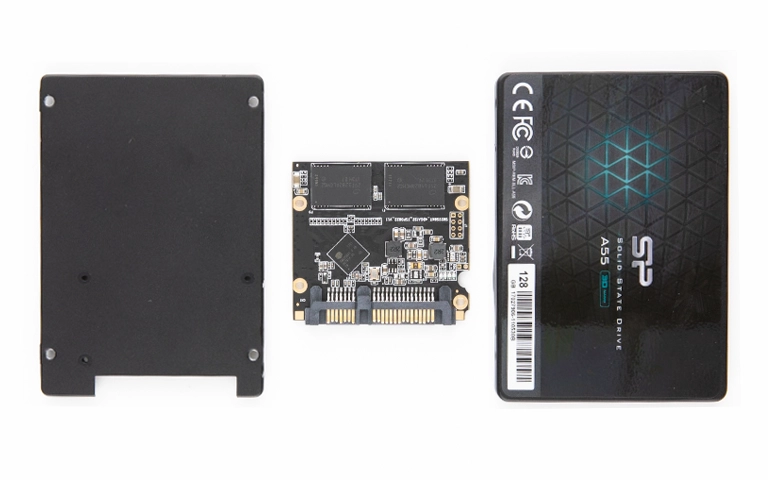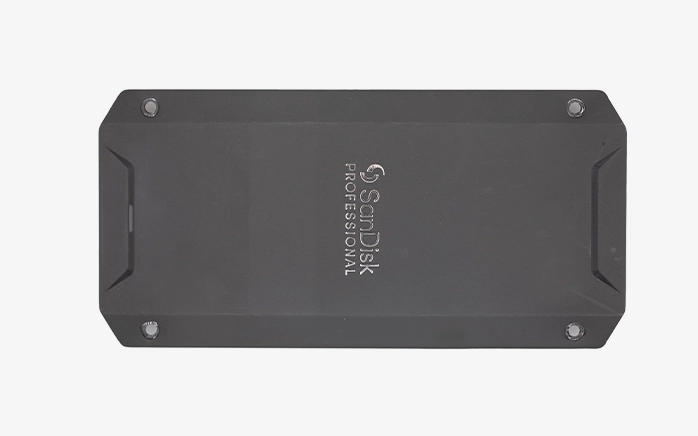Introduction: When SSD Speed Meets Sudden Failure
Solid-state drives (SSDs) are widely favored for their speed, reliability, and energy efficiency. The Silicon Power A55 SSD is no exception, commonly used in laptops and desktops to accelerate performance. However, like all electronic devices, SSDs remain vulnerable to hardware failure – especially due to electrical issues like power surges.
In this case study, we walk through a recent SP A55 internal SSD recovery handled by the engineers at PITS Global Data Recovery, highlighting common signs of SSD failure and how we successfully retrieved nearly all critical files from an otherwise unreadable device through expert SSD data recovery techniques.

Symptoms: Recognizing SSD Failure Early
The client contacted us after their desktop computer shut down during a file transfer. The internal SP A55 SSD was no longer recognized by the system. No BIOS detection. No boot. No activity.
Here are some of the most common symptoms of SSD failure observed in this and similar cases:
- OS not booting or stuck on loading screen
- File system errors or corrupted partitions
- Sudden read-only mode, preventing any new data from being saved
- Frequent freezing or crashing of apps before total failure
- Drive not showing up in BIOS or disk management
The client initially considered DIY software tools but quickly learned from online research that power surges can permanently damage SSD controllers, making software recovery ineffective. They opted to send the SSD to our lab for a professional evaluation.
Diagnostics and Root Cause: Controller Failure from Power Surge
Once we received the Silicon Power A55 SSD at our lab, our engineers conducted a full diagnostic scan.
Findings:
- The SSD had suffered controller-level failure due to an electrical surge.
- NAND flash memory chips were physically intact, but could not be accessed through the controller interface (SATA).
- No SMART data was readable, and the drive presented as “dead” on all standard imaging tools.
Get a Free Consultation.
Our recovery experts are ready to assess your device and guide you through the safest path to recovery. Fill out the form to get started.
"*" indicates required fields
Understanding the Role of the SSD Controller
The controller chip is the brain of any SSD. It’s responsible for:
- Managing communication between the NAND memory and host system
- Handling bad block management and wear leveling
- Organizing data with proprietary algorithms
- Encrypting and decrypting stored data (on certain models)
When the controller fails – especially during a power event – access to the NAND becomes impossible without advanced techniques like chip-off recovery.

Data Recovery Process: Extracting and Reassembling NAND Data
Our engineers followed an advanced NAND-level recovery procedure:
1. Cleanroom Disassembly
The SSD was carefully disassembled in our certified cleanroom environment to access the NAND flash memory chips without causing static or physical damage.
2. NAND Dumping via Programmer
Using a dedicated hardware programmer, we extracted raw binary data (bit-by-bit dumps) directly from the NAND chips, bypassing the failed controller.
3. Controller Algorithm Reconstruction
SP A55 SSDs often use custom mapping algorithms specific to their controller firmware. Our recovery team matched the dump structure to the controller family and applied pattern analysis to rebuild the original file layout.
4. Decryption and File System Rebuilding
In this case, the SP SSD used built-in hardware encryption. Without access to the original controller or encryption metadata, our team had to:
- Locate encrypted file headers
- Extract encryption parameters stored in hidden memory regions
- Use in-house decryption tools to unlock and mount the file system image
Results: Recovery Success and File Verification
Once the reconstructed file system was complete, we invited the client to a secure remote verification session, where they reviewed a preview of the recovered files.
- ✅ 98% total data recovery
- ✅ 100% success rate for priority folders (project files, financial records, photos)
✅ 6 business days turnaround from receipt to delivery
Recovered files were transferred to a brand-new 1TB external SSD and shipped securely to the client.

Why SP A55 SSDs (and Others) Fail
While the SP A55 is a reliable SSD model, age, usage intensity, and power-related events often lead to failure. Key failure scenarios include:
- Power surges or lightning strikes that damage the controller
- Exhausted P/E (program/erase) cycles leading to bad NAND sectors
- Firmware corruption due to improper shutdowns
- Electrostatic discharge during installation or handling
Once a controller chip fails, NAND chip access becomes a highly technical process, requiring cleanroom tools and algorithmic reconstruction.
SSD Data Recovery Is Not a DIY Job
Many users mistakenly try connecting the SSD to another computer or running software utilities like CHKDSK – which can overwrite or permanently corrupt remaining data.
In modern SSDs, especially those with encrypted file systems and proprietary layouts, controller failure means that only a professional lab with chip-off and decryption capabilities can restore your data safely.
Your Data Security Is Our Priority
Data privacy isn’t optional. It’s our commitment. Our secure recovery process ensures your sensitive information stays protected from start to finish.
Trust in certified security. Start your recovery today! Call Now: 888.611.0737
Trust PITS Data Recovery with Your SSD Case
At PITS Data Recovery, we specialize in advanced SSD recovery, including:
- Power surge and controller failure recovery
- NAND-level and chip-off extraction
- Proprietary file system and encryption decoding
- Secure file verification and delivery
Call now: 888.611.0737
Request Your Free Evaluation

Final Thoughts
If your SP A55 SSD or any solid-state drive has suddenly stopped working, don’t take risks with DIY solutions. Contact the experts who understand the architecture, controller logic, and decryption processes required to recover your files safely.
PITS Data Recovery – When your SSD goes silent, we bring your data back to life.
Don't Let Data Loss Ruin Your Business
Minimize business disruption. We retrieve lost data fast, so you can focus on what matters.



